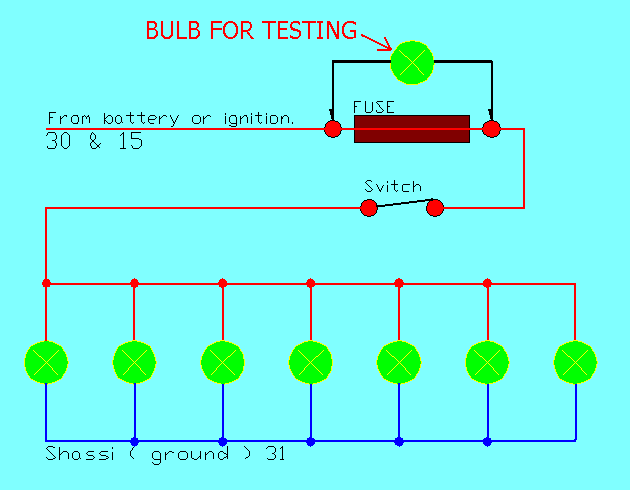Here I will describe how anyone can locate a short circuit. The main problem with a short
circuit, is that when the fuse is overloaded, it burns off, and you have no curent to follow
to the item ( any electric device ) with the problem. My solution is wery easy and
inexpensive, and you allready have the equipment in range. Simply attach a (light) bulb
instead of the fuse. The effect (watt) MUST be lower than the fuse limit. Example, if the
fuse is 10Amp, and the system is 24Volt, the bulb MUST not be larger than 240Watt.
However, on a circuit with 10Amp fuse, the curent consume normaly is lower, and there
is no danger in use of a bulb with lower effect. If the bulb is attach'd with a long pair of
cable, it can be placed where it's easy to observe.
THIS METHOD IS NOT TO RECOMMEND ON SENSITIVE EQUIPMENT, BUT VERY USEFUL
AT F.EX. CIRCUIT'S WITH SEVERAL CONSUMER'S. ( Position light's etc. etc. )
With the bulb attach'd, instead of the original fuse, the bulb will light with full power, as
long as the short circuit exist. When the problem is located, either by manual check of all
consumers, or by use of a DC clamp ampere-meter, the attach'd bulb will loose intensity.

On a circuit with position-light's with 10 bulb's of each 10watt, the fuse will be larger than
4,2Amp, and in this instance I will recommend use of a 24Volt 70Watt bulb. (H1, H2, H3 or H4)
If there is any questions that need to be answer'd, please contact www.mobilcrane.com
|

